Do you ever wonder how your tastes change over time? How you remember loving one show to death but now it doesn’t hold up very well, or the shows that you hated stick with you after all this time? Well, that’s the idea behind this retrospective: a look back at the year 2010 in anime, and to those shows from yesteryears. For me though, it’s more of a way for me to play catch up with these 2010’s offerings, since I only watched about a handful of shows from that year; many of them were years ago and my sweet memory just fails me sometimes. I hope this retro review serves as a reminder for long-time fans and as a recommendation for those who want to check out shows in the starting year of this decade.
I have heard many people complain that 2010 was a low point for anime, with a significant decline in both quality and quantity of shows produced. Shows were mostly reduced to 1 cour in length (a trend that continues to this day). Moe anime – cute girls doing very cute things – took the anime fandom by storm with the likes of K-On!! and OreImo. The terrible trend of incest onii-chan love flourished, as many popular shows like Yosuga no Sora, OreImo, B Gata H Kei and KissXsis embraced it at full force. On the other end of the spectrum, fanservice anime and crude, vulgar comedy anime had an unexpectedly great showing, lead by B Gata H Kei and Panty & Stocking with Garterbelt with the former and Mitsumodoe, Seitokai Yakuindomo with the latter. It was a year with great loss too, as Satoshi Kon, one of my favorite directors EVER (animated or not) passed away unexpectedly, leaving a big wound that still hasn’t healed. Even now I still visit The Dreaming Machine’s website from time to time. Just an old habit.
On a brighter side of things, noitaminA remained as relevant as ever, with 4 shows (5 if you count Katanagatari which re-aired in later years) ending up in my top 10. Makes me really sad to see how they have struggled in recent years. What is wrong with you, mate? We also witnessed the short-lived but ambitious Anime no Chikara – a project that tried encouraging more original anime produced by A-1 Pictures and Aniplex. As much as I love noitaminA for its focus on mature themes for a mature audience, it was projects like Chikara that I would support wholeheartedly; original, fresh and new ideas that aren’t based on mainstream sources should receive more attention. Whatever happened to the project, I would love to see it alive again.
On a personal note, despite everyone complaining about 2010, with all the shows I sampled, especially with the top 10, I found that this year wasn’t bad at all. The top 10 could be a solid lineup for any given year. And come on, in a year where the top 10 is so diverse it consists of a sports show, a horror show and an incest show (*achoo), it wouldn’t be that bad, right? RIGHT?
To make this list more consistent (and I’m intending to do more retro reviews in the future), here are some basic rules:
– There are 30 shows this year that I decided to sample. I will rate, rank and give short reviews on those shows. Shows are eligible in their year of airing. Shows with split-cour in different years will be eligible for both years (for example, Fate/Zero will be eligible for both 2011 and 2012). Shows that have 2 cour but run in two years will be eligible on the year they start airing (for example, the holy quartet From the New World, Blast of Tempest, Psycho-Pass and Jojo’s Bizarre Adventure will be considered as 2012 anime); likewise for long-running shows (meaning Cross Game will be 2009, Hunter x Hunter will be 2011).
– For movies, I will pick exactly 5 movies that air in each year and then choose the best one. Think of it like having a nomination round and then picking out the winner. Short movies that are longer than 30 minutes are eligible in the Movie slot, as are short-form OVAs (meaning Time of Eve or FLCL are eligible here). Multi-part movies will be considered as one entity (like Kizumonogatari Trilogy and Garden of Sinners. Evangelion movies however, due to their separate releases, will be considered as different nominees).
– For rating, I will use psgels’ 100 score system, but beware that my barometer might be different than his. For instance, I consider 60/100 (not 50) as a line between medicroce and passable shows. 75/100 to 89/100 are recommended shows and from 90/100 upward are the cream of the crop. In some rare occasions, I will include plus (+) and minus (-) but remember that they don’t have anything to do with the quality of the shows. (+) is awarded for shows that have strong feminine message, or shows that portray female characters in a positive, sensitive or realistic angle. (-) is casted for shows at the opposite end of the spectrum.
There will be mild spoilers. It’s worth mentioning that this list is highly subjective. For instance, you will see me talking a lot about how female characters are portrayed in some shows (I hesitate to use the term “feminist” here). And don’t get furious when you see shows like Yosuga no Sora make a top list (there. I said it) because that’s just how subjectivity works. With all the groundwork established let’s hit the road before it gets dark, starting with #30:
Anime Shows of 2010
#30 Highschool of the Dead (Madhouse)
Here’s to the only show that falls below the average mark of 2010. Highschool of the Dead, like the very title suggests, is a trashy, fanservice, brainless show that only aims for bashing the shit out of zombies’ heads, using cool gadgets and cool lines while staring at girls’ huge boobs. Not that everything about it is bad because I can give it two positive notes. First, zombies have been a Western popular culture touchstone and the East just started catching up on it in the last 2 decades or so. Anime has been slow to on pick up that trend, but well, here you go: HOTD is your definitive anime zombie-apocalypse show and for that reason alone it’s worth checking out. Second, for better or for much worse, Madhouse knows exactly what type of show they wanted HOTD to be, and they made it with style. Not that “on the edge of your seat” entertainment, but it’s serviceable enough to never really become unbearable to watch. But what is trashy still remains trashy. The characters are over-the-top, unlikable and one-note caricatures who sometimes break their own personality, and the plot stretches so thin that we could summarize the entire season’s progress in a few sentences. There are some questionable group decisions, some plot holes and HOTD never attempts to dig deeper on the cause of the zombie outbreak because… gotta flash some panties and make the girls all wet first, I suppose? It’s the kind of entertainment that I bemoan and shake my head at as a downfall of mankind, though to be fair its production values are excellent enough to fulfill its trashy premise.
Rating: 57/100
#29 The World God Only Knows (Manglobe)
Welcome to your typical anime, set in a mundane high school setting just like thousands of anime that came before and thousands more to come after this; because obviously Japan has the best high schools ever. The World God Only Knows is a show for teens and probably made by teens, as the level of maturity here is just… worrisome. An even more worrisome factor is the fact that this show was popular enough to guarantee 2 more seasons. You never cease to amaze me Japan. To its credit, the show provides some sorts of twist to the galge games, and the show has its strong formula, but I can’t say I am fond of its ingredients: a game otaku (nope) + win the hearts by kissing (nope) from the various archetype girls (no, no, no). Take notes that those girls are saved not by the romance itself but by the way they face and embrace their weaknesses, as a result those girls have an opportunity to develop a bit, but it also comes at a price since the main guy feels like more of a romance decoder than an actual character. His another trait, God-conquering mode or whatever, is so over the top and the demon girl just making cute expressions the whole time it’s hard to take them seriously. The fact that those girls just conveniently lose their memories after the kiss and then get shoved off to the side doesn’t do this show any favors either. Overall this show ends up being unremarkable and lame, and loud. Don’t count on me to check out its second season, I’ve seen enough.
Rating: 62/100
#28 Baka to Test to Shoukanjuu (Silver Link.)
We have another show set in high school, albeit Baka to Test actually does squeeze out something from its setting. They use tests, scores and different class systems and we have the usual underdog story where the leads from class-F fight all the way to the elite class-A. Except that they forget about that story halfway and we have all the hijinks from the main cast instead. Speaking of which, where are the rest of class-F’s residents? If there’s one thing that displays prominently in Baka to Test, it’s the anime humor. We have usual the anime tropes played for laughs of *taking a deep breath*: boob jokes, panty shots, lesbian jokes, incest jokes, nosebleed, yandere, stupid harem with a plain male lead in an exaggerated manner, swimming suits, making bento for your crush, upskirt shots and the list goes on and on. Granted, all those jokes and all those characters archetypes are too by the book and tick all the cliche boxes that it feels like the show just throw every gags at us with full speed and hope those work. I’m personally not too fond of any of those, and the fact that all the jokes are quite repetitive means they get stale very fast. The technical side of this show, however, is dynamic and overall pleasing to the eyes. The animation is energetic and I’m digging the spotty inking backgrounds and the different color shadows from each character. The pacing is terrible as they try to stuff in these battles in the last 3 episodes, while the majority of its run is dedicated to the cast playing in the pool, having lunch to die for and participating in stupid antics one after another. Like the title suggests, it’s a dumb fun show but there’s a kind of entertaining value in Baka to Test. Shut down your brain, sit back and enjoy the ride.
Rating: 63/100
#27 My Little Sister Can’t Be this Cute (OreImo) (AIC Build)
Let me make this crystal clear: I never have a good track record with popular shows. I struggled to finish Attack on Titan a few years back (and eventually gave up entirely this year) and honestly don’t remember any Marvel superhero movies or even Avatar at all. I guess the main reason is that what appeals to the general public just doesn’t attract me. In this case, two main draws about OreImo – the relationship between Kyousuke and his sister, and the outlook on the otaku world and how otaku and anime fans want to be viewed by others – don’t really grab me that much. First off, the two siblings have a very awkward relationship, and it’s not in a good way. By that I don’t mean about their romantic tension (not yet!). They might dig deeper at the root of their distant relationship later on but I can’t swallow the fact that despite their sharing the same roof all their lives, Kirino doesn’t know his childhood friend or Kyousuke isn’t even aware that she’d go to America. They just like living in 2 different worlds, hence I feel weird at the extent Kyousuke would go to support his sister. It doesn’t help that both Kyousuke and Kirino aren’t that interesting to follow – a typical male lifeless harem lead and an annoying 100% tsun 0% dere. Second, we have all these otaku activities (go to Comiket, cosplay, line up to buy game, and for Christ’s sake writing a web novel that becomes so successful that it is adapted into an anime). We have a taste of everything, but everything we have is so trivial that it fails to leave any impact. Then the plot doesn’t add up (what happened to the anime version?), feels a bit too proud of itself (when he says everyone’s jealous of his sister’s success – a girl who writes a cliche but popular novel that later is turned into anime. I have a feeling that the writer is talking about himself and this very show), and just plain ridiculous (it does bring the point home when her father forbids her to play eroge games and anime, but it’s incredibly stupid when her best friend does the same goddamn judgement) and the ending just pulls a stupid twist that clearly destroyed my all good will toward the show. It’s decent enough to pass the time, not so much to leave any meaningful impact.
Rating: 65/100
#25 Squid Girl (Diomedia)
Squid Girl is your typical light-hearted slice-of-life comedy show. At that, the show succeeds as an enjoyable, if a bit unambitious watch with a likeable lead, well-timed gags and easy-going atmosphere. The titular character, Ika Musume, carries the show with her charms and mostly steals all the spotlight. Apart from her cute mascot appearance, she also has a strong charisma, a childish personality to take over the human world – though the show rightfully never takes her grand scheme seriously. Typical for a “fish squid out of a water” kind of story, the best part of the show’s humor revolves around her interacting with the supporting “human” cast, most of the time have her engaging in human activities, and other times using her squid quirks for comedic effects. The supporting cast is varied enough, and the comedic nature is fresh enough without being overly repetitive. It helps that normally each episode is split into 3 small segments so the jokes don’t outstay their welcome. In particular, there’s one wordless segment of the mini Ika Musume that details the lifelong friendship between her and her owner, in the manner of the famous 9-minutes montage of Up, that is surprisingly attentive to details and heartwarming. The production, while consistent enough, is uninspiring and overall average. Squid Girl is a light, earnest show with an incredibly charming lead that is easy to watch, but also because it doesn’t attempt to go beyond that, it’s a title that’s easy to forget as well.
Rating: 70/100
#24 Arakawa Under the Bridge (Shaft)
Within the first few minutes, for anyone who is still unsure, it’s pretty obvious that Arakawa Under the Bridge is a Shaft product, with all the head-tilts, impressionist visuals and a distinctive Shaft-feel, for better or for worse. I actually found the first episode to be underwhelming because the premise is just too over the top to be taken seriously. Then a few episodes in and I started to warm up with the humor and its eccentric cast and then it started to hit me: Arakawa actually has a fascinating and (somewhat) satirical look at social status and flips around what common sense really is. All the so called “standards” that society creates. Are those, after all, a set of expectations created by society? Then what really happen if all that common sense is thrown out to the window? In a mad world only the mad are sane. But it stops right there. Arakawa never intends to give a deep message or anything; the show’s just content with the cast having unstoppable hijinks one after the other. Apart from some recurring jokes which I feel wear out its welcome fast (like the gag of Sister busting blood every time Stella insults him), we can’t really expect what comes next. They consistently mess with our expectations so it’s rather refreshing to follow. But I admit that the humor isn’t exactly for my taste as I’m never fond with exaggerating and this show is a giant pile of over-the-top and exaggerations.
Rating: 72/100
#23 Tantei Opera Milky Holmes (J.C Staff)
With early 20th century detective inspiration, 1980s level of production, and 1990s character designs, Tantei Opera Milky Holmes looks old and feels old. The more I watch it though, the more I understand that these are intentional. This show is a parody of those good old detective and magical girls shows, with their pulpy stories, so-dumb-it’s-hilarious casts and campy dialogue. Yet somehow it works, partly due to the fact that it never takes itself seriously and mainly due to the fact that the staff clearly had fun times making it. The four girls are charming through their dumbness, and I mean it as a compliment since the level of stupidity is just absurd. The show itself is always dynamic and full of energy. The humor is more on the Baka to Test side of the spectrum, but while Baka to Test relies on established tropes and then maxes it up, Milky Holmes takes a spin on the tropes, goes completely mad and pokes fun at everything it can get its hands on, including itself. In fact, when the show attempts to wrap up the narrative arc with a more serious tone, it crashes down and burns. From what I gather, however, the later seasons don’t have this issue, so they certainly know what they’re good at. Although like I stated above, the production might look outdated and the comedy might feel like it shoots in every direction, but there’s a level of love and attention to detail that one will notice if one looks closely enough. It takes some time to get used to the humor but once you get past all the silly stuff (like Twenty’s erect nipples. Yeah, they went there), you’ll be in for quite a ride.
Rating: 73/100
#22 Amagami SS (AIC)
Amagami SS is one of the most niche appeal anime of this year, for I reckon only people who play its Dating-Sim game or have an interest in romcoms can fully appreciate this gem. Having said that I would advise everyone to give it a chance, because Amagami SS could serve as a textbook example of a typical omnibus format; for all its strengths and weaknesses. I’ve mentioned this before but I’m in favor for this format. After all, omnibus format is all about possibilities. I firmly believe that one decision/action can change the course of your life entirely and it’s fun to see how those possibilities play out (something that this year’s Tatami Galaxy excels at). 4-episode length is just about enough to flesh out each romance route and the prospect of getting to know (and hook up) with all different types of girls is too good to ignore. But this format comes with its limits as well. Arcs are inconsistent in term of quality (Arcs 2, 4, 6 for me are significantly better than the others) and the main lead doesn’t have any real personality because his characteristics change in accordance with each arc. Lastly, the reset button means that all the time we invest in the romance will be gone with the wind after the new arc begins, which can result in an emotional whiplash. For this show specifically, it falls into the pitfall that those girls are mostly archetypes: a hot senpai, a childhood friend, a shy little sister’s friend… and only some of them develop well during their arc. The show also has some really weird fetishes (which I guess is the bonus points in the game) that feel just out of place and the comedy sometimes is cringe-worthy. To its credit though, I like the fact that after finishing their arc, the girls are still around and add a little to other arcs, which is a joy to watch every time. In the end, I would say that Amagami SS is strictly for fans of romance. If you want to study about the omnibus format this show is a perfect example, but others might find the multiple romances dull and uninteresting.
Rating: 73/100
#21 K-On!! (Kyoto Animation)
K-On, one of KyoAni’s streak of shows that were responsible for me getting sucked into the animeland in the first place. The streak that started with Haruhi, followed by Clannad, K-On and Nichijou and ended with Hyouka. Since then KyoAni works didn’t really grab me until Sound Eupho in 2015 (because… ahem… I had grown since). Watching K-On back this time proved to be nostalgic for me, but now that all the fanboyism has died down, I can really watch the show this time with a more unbiased view. First thing first, they couldn’t have picked a more appropriate title for this show, K-On (meaning Light Music), in the sense that this show is really light… in music. “Laid-back” and “Easy” are two definitive qualities of K-On, since there is no real conflict whatsoever in this series. The band members engage more in drinking tea, eating sweets, daydreaming (in one episode, a member of the band indeed daydreams multiple times. One of my favorite episodes actually) and spending their days aimlessly than playing any real music. The show is too easy on its characters – remember how Yui got her guitar or how the band has tickets to attend the summer festival? Yes, they didn’t have to do anything. The character development and even the story were light and thin like a paper. In fact, the naysayers are mostly right as this show seems so safe that it feels like KyoAni didn’t even try to step out of their comfort zone.
This second season, which is double the length (and some might say, double the moe and double the nothingness) improves the first season, mostly in its execution. The production is much more in control and the character’s dynamics are fair bit sharper; you can see each member has different chemistry with one another, and sometimes, K-On can pull off some very satisfying and effective moments. But its good qualities ends here, since “deep” is never the main focus of K-On. Characters grow very little despite 30-odd episodes length, plot wanders aimlessly like its cast, and there’s too much moe for its own good. K-On is a show that aims hard to be accessible, and for that strength, K-On still rightfully stands at the top of its cute girls genre, but don’t expect anything more than that.
Notes: Talking about misconceptions, I had always thought, for all those years, that K-On was the original anime created by KyoAni. After watching it this time I eventually learned that it was based on the 4-koma series. Alarming how often we get the simple facts wrong.
Rating: 74/100
Entire Series Rating: 76/100
#20 Mitsudomoe (Bridge)
Hands down my pick for the best comedy show of 2010, as I can’t remember any other show that made me laugh as much as this one. The irony here is that Misudomoe is probably the least well-known title out of this retro summary, overlooked even when it was airing. I can understand the reasons though: the art is unattractive and the animation is simple, which leads you to think that Mitsudomoe is a kid-friendly show. Well, you’ll be damned. The humor is on the vulgar side and the show relies on misunderstandings to deliver its gags. Granted, I’m not really into misunderstanding-based humor, but when it’s done right (like this one), with misleading lines like “we want to fondle your Nipple” or “you gotta nail me in the butt again sometimes. It felt great”, hilarity ensues. The fact that these kids say those lines make it even more extreme, for better or for worse. It’s worth mentioning that if you plan to try this series out, give it at least 3 or 4 episodes because the first episode in particular, is unfortunately its weakest. The premiere nailed the vulgar tone right, although they push a bit too far off the line. In addition, the first episode is framed in Sensei’s perspective, and as a result, each of our Three Stooges carry strong unlikable traits that threaten to overwhelm the show in a bad way. We laugh at them instead of laughing with them. Later on, when Mitsudomoe leans on the latter, it got much better. The triplets all have their soft sides beyond their dominant traits and the Eldest especially grew on me. You might find Mitsudomoe unbearable at times, but that’s exactly why you might never find something as hilariously risqué and stupid as this one.
Rating: 75/100
#19 B Gata H Kei (Hal Film Maker)
Yes, B gata H kei is a smart ecchi that uses its genre’s premise to address teenage girls’ sexual curiosity that most other anime shows just take at face value. From a feminist’s point of view, this show lands very well as the lead character Yamada not only knows exactly what she wants, but determines to do everything in her power to reach that goal. One thing is for sure, B gata H kei really understands her character, something I can’t say about Sora in Yosuga for instance. Her antics are delightful to follow, and I really appreciate that the show goes the extra length to show her in the nude, since it’s a crucial part of the story (I’d never approve of the nipple thief EVER, #tohellwithcensorship and you know what, even Scum’s Wish didn’t go this far). But to that extent why don’t they go all the way? Isn’t it the whole premise? It’s obvious that the show stops midway so there are just too many loose threads that never get resolved. For example, they introduced Kanejo’s brother, raised the conflict and then kind of… put him aside entirely during the last few episodes. The rivalry between Yamada and Kanejo, likewise, is completely overlooked for a rushed final arc. For what it’s worth, the show is a decent, fresh look at teen romance and sexuality, but never really ambitious enough to raise the bar. Nevermind though, for its lack of deeper themes, this show more than made up with its entertainment values.
Rating: 75/100
#18 Seitokai Yakuindomo (GoHands)
Just as infamous as Shaft in terms of visual weirdness that stands out too much on its own for no good reason, GoHands studio is known for heavy color filters with blue hues everywhere that neither convey the mood nor are aesthetically pleasant. Hand Shakers was such a train-wreck on every level that I find myself amused to check out Seitokai, arguably their most well-received show to date. Well, to my surprise, this show not only provides many solid gags, it’s well-written and the visuals complement the source material well. You can see trees and buildings with blue shades and flat characters sometimes but otherwise the production holds its ground well. It’s not particularly original in terms of its setting (high school setting where the club our leads attend this time is… the student council), its characters (you’ve seen these types of characters before and even their designs remind me of countless characters from other series), or even plot (the main guy gets sucked into the student council job where those female council members all have their own quirks). How Seitokai makes up for its shortcomings is the crude jokes that are well-timed and usually hit their mark. Maybe it’s just me who digs these types of absurd gags, but I can relate to those jokes so well. Not much to say in terms of overall plot (because there isn’t one) but it’s good at what it does and count me in on checking out its second season.
Rating: 76/100
#17 Angel Beats (P.A Works)
Here’s a show that has an interesting concept, and has many interesting ideas to expand said concept, but ultimately was way too condensed for its own good. The result: many of its themes could hit much harder if they had more time to develop. I was quite nervous myself when approaching Angel Beats knowing that it was conceived by Jun Maeda – the Kamisama of tear-jerking anime, and indeed many times they played up the melodrama of those characters. Bedridden girl, unnecessary sappy ending, characters received so many hardships of life… (well, the last part is actually an integral part of the show, but still…) are all presented here. To his credit though, when the drama hits, it hits well. But like I said, at times the show rushes towards its many ideas that in the end, the pacing, and the narrative swap constantly like watching a tennis match. Case in point, Otonashi is our main protagonist and we pretty much follow his perspective until we get to the climax and they switch to Yuri to save the day, then snap back to Otonashi and Kanade for a romance that was never developed properly. As a result, Otonashi comes off as totally unremarkable. Originally, Jun Maeda planned to have this show as 2-cour and I believe the show would benefit much more with 24 episodes. I watched this one back to back with Occult Academy and I can’t help but think about the same flaws those two had: too many interesting concepts to explore but lacking the necessary focus to make the works comprehensive.
Rating: 77/100
#16 Night Raid 1931 (A-1 Pictures)
As the last Anime no Chikara show I watched, now I could comfortably say that the project was ambitious, and a successful one, judging on how those shows manage to bring something fresh on the table. They’re messy, yes, but I prefer them much better this way. Night Raid 1931 has an intriguing setting, about a group of Japanese spies in Shanghai before World War II. It’s strange to say this, but the show’s most important episode (episode 7 – which caused a bit of stir during its broadcast for its depiction of the Mukden incident), which features none of our main characters and thus, adds little to the overarching story, is when Night Raid 1931 really shows its hand. This is a show that looks unflinchingly back at all the important events of Japan’s dark era and it doesn’t mince words about the horrible decisions Japan made. Instead, they made it clear those were a process of thoughtful considerations, of how they were aware of the consequences, but charged on for a greater good.
As for the leads, they have some solid chemistry together and most of them have developed just about enough as the show ends. One thing that feels really off, though, is their supernatural ability in an otherwise realistic setting, which makes no damn sense. Night Raid 1931 also suffers from the same issues as other two Chikara shows. First, the ending feels rushed and doesn’t tie up the threads well – like the way it treats Ishiwara’s character, building him up like a big boss and then cheaply shoving him to the side. The OVA, serving as an epilogue for the main story, is seriously better than it has any right to be (so watch it if you plan to check this show out). Second, Chikara shows have a tendency to have one filler episode that is just plain bad that contributes nothing to the main arc and feels dumb at times (episode 4). Lastly, I don’t consider this much of an issue but because at least this show has the balls to feature other languages like how they should in real life, but as a result when the main characters speak some other languages it’s cringe-worthy. Still, I’d definitely recommend Night Raid 1931 – the pacing might feel inconsistent at times and the plot isn’t that realistic version in terms of history’s accuracy, but it did try to make something different.
Rating: 78/100
#15 Occult Academy (A-1 Pictures)
One factor I really like about Occult Academy is that they really embrace the goofiness of the characters. Now that I mention it, not only the characters, but some of its developments and its cases are goofy as hell, in the style that resembles the spooky light-hearted spirits of Scooby Doo. And I’m not at all complaining since I think it works for the show’s benefit as the style makes Occult Academy really fun to follow. Don’t look too deep into its occult themes though, because while occultic monsters indeed make an appearance in this show, its lens of focus isn’t about the supernatural. Maya the protagonist is refreshing to watch – a big part of her appeal is due to the fact that the show doesn’t mind showing her silly side. But the pacing isn’t that great since we spend the middle half without any high stakes (remember this has a save-the-world premise) and the climax, remember this year’s Kado? Well, it’s that level of stupidity where suddenly it becomes a shounen battle between good vs bad that nearly took me out of this show. In fact, if you decided to go that way so badly, why don’t you make something fresh: like the Good Witch gone bad and the Bad Witch gone good? Despite that horrible climax, I wouldn’t say it “jumped the shark” either because the closure (the last episode) brings up a very interesting scenario that reminded me about the real potential this show could’ve had. Occult Academy ultimately has a very intriguing setting and many compelling ideas, but the actual execution doesn’t match up with its ambition. Such a crying shame because with a concept that intriguing, if it had a tighter plot, Occult Academy would become a truly great show.
Rating: 78/100
#14 Star Driver (Bones)
I went into Star Driver expecting a typical mecha plot with spectacular visuals, and what I received instead is a sort-of spiritual successor to Utena, with robots. It comes as no surprise that later I found out the writer of Star Driver also wrote Utena. I kind of enjoy the way he writes his shows: usually it starts off innocently and slice-of-life-y, then it focuses on a certain character and said character fights off (and eventually loses to) the main guy. Sounds predictable but aside from that formula, we know next to nothing how the plot goes. Sometimes the show does a good treatment of fleshing out the characters, and the mecha fights in particular are short and sweet, moreover the battles are diverse and polished enough to keep our attention. In fact, the production quality Bones provided here is top-notch: the animation is smooth, the visuals are wild and the soundtrack, in highlight, is awesome. I might eventually have to download its entire soundtrack because it is phenomenal. But as the show reaches its finish line, I have the feeling that it ends as less than the sum of its parts. While the whole show has a distinctive 3-arc structure (each arc is based on one of the Maidens), I found the second arc between Western Maiden and her twin sister the most effective. The rest of the cast develops well in their character’s episode, but not much else as a whole. Moreover, the main leads are the most underdeveloped out of this large cast. One main theme of the show is how those characters are trapped on this island to perform their duty, and the act of reaching freedom from this series is when the characters decide to leave the island. Curiously enough, it’s the main character who does the opposite. All in all, if you’re looking for a real spiritual successor to Utena, you’re bound to be disappointed. While the show has some truly great visuals, both the writing and the symbolism still can’t reach the level of that classic show and in the end, the results can’t quite match its ambitions.
Rating: 79/100
#13 Bakuman (J.C.Staff)
Apart from only Giant Killing, I found Bakuman as one of the easiest titles to binge through for this 2010 project. The show consistently builds up its story, and usually ends its episode with a strong note so that I can’t help but want more. However, Bakuman proves once again that while I always enjoy these types of shows (along with titles like Your Lie in April and Nodame Cantabile), they’d never rank amongst my favorites. With source material by the creators of Death Note, this show feels awfully like a part-autobiographical story with a bit of shounen touch-up of a young duo who begin their career as mangakas. The process of making manga and moreover the true-to-life manga business behind the scenes are easily Bakuman’s biggest strengths. It feels great and even inspirational to see these kids working on something they’re passionate about. Judging it from storytelling viewpoint, the show is really well-paced and I have a firm feeling that they know exactly where the story is heading.
But Bakuman is not without its issues and boy, for me these issues are all critical that bring the show’s quality down a few notches. First off, the main protagonist Moritaka comes off as a typical shounen male lead, who is so blinded by his own ambition that he basically ignores others’ opinions and even his partner’s interests, thus becoming mean-spirited. In addition, his romance with Miho is so “idealistic” it becomes silly and laughably bad – it could rank amongst the worst romances ever. As a result, I can never get behind the reason why he wants to rush his manga publication, let alone why he’s rushing at the cost of him and his partner. Maybe that’s the point that Bakuman is trying to make (that they have what it takes despite knowing the hard labor), but it doesn’t make his selfish decisions any less forgivable. Which comes straight to my second point: I must stress that the second issue I have with Bakuman (and Re:Creators this season in that regard) is highly subjective, but I have the same opinions as Hattori (their editor), that the kids deciding to make a mainstream manga to go for first place is a very bad, bad idea. I believe when the kids decided to go mainstream they eventually lost the distinctive voice that made them stand out in the first place. This, again, is my personal whip at the show and it does say something that I invested in the story enough to have personal attachment to it.
The last issue, the most surprising one, is that Bakuman poorly depicts its female characters, something that I didn’t even mark down with a show like Highschool of the Dead (as trope-heavy as the girls are, at least they can still kick some ass). They can be summed up as “a boy’s idealized version of a girl”, something that Moritaka (that kid again!!!) argues at one time, quite vocally, that it’s a type of girl the team wanted to make. Miho, as a result. remains more as an object than a real person. And her perfect manner… gosh… ever seen an insane character that appears normal with a deadly nice smile? Or a creepy emotionless doll? She gives off that same vibe. Kaya changes from high-spirited girl to a girl that exist only to cheer those guys on. But the real mistreatment of women comes pretty early on, when Moritaka asked his parents if he can choose mangaka as his career; and here’s the answer that he receives: “Men have their dreams that women can’t understand”. That answer seriously pissed me off. I was mad not because of how terrible it sounds, but because it sounds all too real. I grew up in the same kind of society so I understand completely what his father means. As hard-working as they are, if women just spend whole day doing housework they would never understand men’s career ambition and thus, they have no say in such important decision. Give me a goddamn break.
Rating: 80-/100
#12 Panty and Stocking with Garterbelt (Gainax)
This show is a shameless commercial product. It embraces lowbrow, bad taste humor with its sex jokes, toilet humor, blatant fanservice and pop-culture references ranging from old movies (just look at its episode titles) to real life celebrities to MTV channel… Well, you know what you’re getting into when the catch of the show doesn’t lie in its plot (those girls fighting Evil Spirits to earn coins) but in its fanservice: the town where a dick can become Salomon Key and lingerie can become lethal weapons. In truth, Panty and Stocking is much more akin to Western cartoon than anime, with its crude humor and its artstyle that heavily influenced by Drawn Together, The Powerpuff Girls and the likes, but with much better action sequences and much worse humor. It goes all out with its sex and bad taste jokes and the main storyline is thin as fuck, and as a result more often than not the show leaves a sour taste in your mouth. But by all means, Panty and Stocking isn’t cheaply made, as I can see so much creativity in this show, most notably in its lively animations, knock-out action sequences and addicted-level soundtracks. This is a show that pushes the boundary and manages to make anime feel fresh again. It’s decidedly a title that brings as many lovers as its haters and for that I tip my hat off to Gainax who had balls to make this show happen. They had balls to do the fanservice properly; and God they even had balls to parody themselves with that Gainax infamous twist ending. In a fairly deeper view, Panty and Stocking could be considered as Gainax’s reaction to the typical ecchi and fanservice anime that keep doing the same formula for milking as much cash as possible. To be frank I consider Panty and Stocking more as a Western adult cartoon where sometimes it’s brilliant enough to even surpass its inspirations (its MTV “spoof” fares much better than your contemporary music video out there). Yep, this show is a shameless commercial product, but I mean it in the best possible way.
Rating: 80/100
#11 Durarara!! (Brain’s Base)
Watching this show again this time, more than any other shows in the retrospective, brings back a lot of sweet memories from the old days. I remember getting real hyped when Durarara came out (penned by Ryohgo Narita and produced by Brain’s Base, in the wake of their Baccano’s success. What else would you ask for?), praised it to the sky and then got frustrated at the story that kept running and running and eventually bailed out somewhere in the later seasons. Now after this rewatch, I can pretty much confirm all my feelings about it. But let me pull over to the sideway to talk about Baccano first. As much as I love that show myself, the weakest thing I find about Baccano lies in its OVA. The side stories still add some more new angles to the main story, and they introduce some more eccentric and memorable characters, but they all feel inferior to the point of losing the sparks of the original story. Durarara has this very same problem but to a much larger extent.
In fact, if Durarara stopped right at its first cour, I wouldn’t hesitate to place it right at my top 5. The show starts strong with its great grasp on the huge cast of characters, the non-linear stories that connect strongly to each other, the main story never loses its focus and most of all, the settings that have so much personality. The way different characters narrate each episode not only underlines each character’s own voice, but also how each of them add up to the big picture and breathe life into the busy town. After all, the sequence where Celty finally accepts her incomplete form and embraces the wind is still one of my favorite moments in 2010. But then, the second cour, while developing the main trio carefully, just can’t live up to the greatness of the first and eventually lost what was special about it. I intend to finish the show this time for the upcoming retro review and maybe then my impression with it will improve, but for now I consider Durarara to be a consistently downward series – in a sense that the following cour would only be half as good as the previous ones (the anime equivalent of M. Night Shyamalan’s body of work).
Rating: 81/100
Top 10 Anime of 2010
#10 Working!! (A-1 Pictures)
I know objectively this show doesn’t offer much beside a bunch of eccentric characters interacting with each other, but I don’t deny that I can watch this gem all day long without getting bored. It’s refreshing for once that the setting is almost entirely in a working restaurant, and for a show set in a diner it’s surprising that we don’t see much food or even customer interactions. The focus here is squarely on the staff who work together and learn more about each other. I have mentioned before that I see a great cast when you can pair up any two characters and they have a distinctive dynamic together, here in Working!! It… well, works like a charm. The thing is, all of them have quirks that are completely bizarre (well, you don’t see any waitress who carries a katana in real life ever, and Inami who is too terrified of men, she punches them without thinking would be very very annoying in real life), but that makes this show so charming and funny and beyond all, unlike any other gag comedy, the story keeps progressing, characters keep evolving, so does their chemistry. I’m quite surprised as well that those quirks aren’t just there, they have some solid reasons behind why they’re the way they are and in the end many of them have developed since we first met them. This is another solid addition to the slice of life moe genre and I don’t mind spending my time with those characters at any time, something that I can’t say with 90% anime out there in the sea and that OP song already pop up in my head: Someone… one one oh yeah!!!
Rating: 81/100
#09 Rainbow: Nisha Rokubou no Shichinin (Madhouse)
Rainbow will be most remembered for its gritty, grim, and gripping portrayal in the first half of this show where our main cast stay in the same “prison” cell of the Special Reform School. At the beginning of each episode, the creators made sure to let us know about the explicit nature of the work as they believed that it’s an important part of Rainbow. They’re mostly right: this is a show where the seven boys have to go through some real shit, some abusive actions, discrimination, and all they have are their bonds with each other. The second half is an extension of that bond as each member experiences hardships, but strives to improve the lives of others, even at the cost of their own. It’s friendship bond at its brightest and firmest. When you compare the tones of the first half and second half, there is a tonal shift, but one that I don’t particularly mind. First, I like the overall pacing of Rainbow. The events come and go at the right length so they can have the most impact. Secondly, I like the decision of providing An-chan as a backbone of their relationships, as a wall for each of them to rely on, and then pulling him out of the picture so that the boys have to handle their lives on their own in second half. Really, Rainbow is all about those boys whose despite some early mishaps, come to love and live the lives they choose.
For a show that focuses on seven boys against a backdrop of Japan just after the World War, I have to note that the treatment of female characters in this show is quite positive. In Rainbow, sexual abuse, prostitution and women who can’t choose their path of life appear regularly – almost too regularly. But there’s a sympathetic sensation at their fates, because the show views them more as victims of the era and for me it’s a remarkable view considering that Rainbow is a shounen, masculine story at heart. One really big problem with Rainbow though, and this issue is so significant that it keeps the show from become a great, top-tier work, is that it’s so damn heavy-handed at times. People overact, people become mad and violent for the sake of giving those boys hard times and not only does it feel forced, it’s irritating to watch. I consider An-chan a shallow, one-note character, in addition, because he’s so straight in his thoughts and actions he appears more as an “ideal” than a normal human being and the part when those guards shoot him is just plain dumb. The other boys have a proper time to develop solidly and at the end, we can all see each of them has grown over time. Rainbow is a solid character drama for mature fan but sometimes they tried so hard to get the point across that they lost a bit of impact along the way.
Rating: 82/100
#08 And Yet the Town Moves (SoreMachi) (Shaft)
Another Shaft production, you ask? At this point the anime fans have sharply divided opinions regarding Shaft’s output as a whole. Even within this 2010 year I can see the similarities between SoreMachi and Arakawa Under the Bridge; both of them focus on a certain set of quirky characters in a somewhat closed, small society. Both of them aim for trolling us as much as possible and while I was lukewarm with Arakawa, SoreMachi has an amazing charm and its cast (almost) never wears out its welcome. If you think this is a study of ordinary residents in an ordinary town, well, think again because the plot goes weird places, involving paranormal and supernatural (but hilariously so) elements later on. This cast has great chemistry together and I swear this show trolled me and made me burst out many times over. The show is at its best when it places its main character, Hotori, into an unfortunate chain of misfortunes or when it isn’t afraid to address bizarre topics. I must note that Shaft decided to adapt it non-chronologically, which relied more on themes than set timeline, which for me, added an extra spice to this wonderful plate. If the ending is any indication, they made a fantastic choice to end the show on the most satisfying note. The ending is one of the most hilarious interpretation of the afterlife I’ve witnessed but it never loses its emotional core. For all of Shaft’s complaining, SoreMachi benefited from its fluid animation, lovely scores and stand out VA. The atmosphere and the tone of SoreMachi is translated well from manga to this adaptation – I know I will remember this one very fondly.
Rating: 83/100
#07 Sora no Woto (A-1 Pictures)
Beside the magical-realism settings a la the universe in The Eccentric Family or Kiki’s Delivery Service, near-apocalyptic settings where humanity has declined (pun very much intended) into a closed, restricted society with established customs and traditions (like in the worlds of From the New World and Haibane Renmei) have to be my favorite settings. Something about the ruined world, about the people who live in that strict world really fascinates me. Sora no Woto is another solid entry with that concept, and in fact this is the show’s greatest strength. Right in the first episode we join the main girl participating in a local festival, in which later we learn about the real skeleton of the mystical creature buried beneath the sea, about how other society also celebrate the same ceremony, but with different belief; or how people in that world struggle to make sense of the technology of the “old world” – our world. Like From the New World, it’s never explicitly clear about the cause that brought the whole human race down. Well, there are hints across the series but the reason is never at once the show’s main focus; instead the show is concerned more with the lives of people in that world – how they live their lives and how they try to make the best out of the world. If you want to sample the show, however, I’d recommend you to watch episode 7 and 8 back to back, because these two episodes highlight the show at its most compelling, and at its dullest. The girls aren’t your deepest bunch but they have great chemistry together and contrary to the cute-girl designs, their personalities are strong enough to hold their ground. The ending (again with Chikara show) feels rushed and there’s some unbelievable Deux ex Machina here; but overall I have little else to complain about this show. Quiet and heart-warming, with an intriguing world that never sells its characters lightly, Sora no Woto is a little gem that deserves more attention it currently has.
Rating: 83/100
#06 Princess Jellyfish (Brain’s Base)
Well, it’s a shame that a series this good still hasn’t received any follow-up, while shows with lower calibre like The World God Only Knows, Baka to Test, and Squid Girl were popular enough to have their sequels. Princess Jellyfish is a show that treats both the otaku’s issues, and the female’s identity, completely spot-on. The fact that they do those things excellently in a good-humored, light-hearted way brings the show up a notch. Princess Jellyfish never sells its eccentric characters short, it understands and has sympathy for the character’s fragile self-esteem, and comes to love them all the same. This love is not only limited to its characters, but to that cozy housing and the production as a whole. I hold this one dear to my heart, as Princess Jellyfish really understands about the self-conscious issues of a timid girl and provides the perspective that, for me at least, holds so much weight. I bet this is the feeling that almost all girls have experienced at some point in their lives: feeling little in this big big world, even more so when one learn that they don’t have the look, nor the talent, like other girls. That’s why the show’s message “every girl is born a princess” rings so true because it comes from that very understanding and the belief that girls don’t need either the beauty or the skills to be beautiful. They just need to love who they are. I love its lively atmosphere, the charms from each member of the cast and the strong dynamic between Tsukimi and Kuranosuke. Also, extra points for the top notch voicing of Tsukimi (by one of my favorites Kana Hanazawa – which for me was easily the best voice acting of 2010). One main criticism for me though, is how the Sisterhood is totally oblivious to Kuranosuke’s crossdressing to the point of ridiculousness. Furthermore, the story is obviously just a tip of the iceberg as by the end, most of the developments feel either rushed or unfinished. The fashion show, for example, comes out of nowhere and resolves too quickly, and it’s unclear where all the romantic relationships will end up. But considering its relatively short 11-episode run, I can understand this unresolved ending and I do think it wraps up the best way it can. “After all, every girl is born a princess” – I very much believe so too.
Rating: 85+/100
#05 House of Five Leaves (Manglobe)
At this point, after having read some manga from Natsume Ono and watched 2 of her anime adaptations (I’ll get to Ristorante Paradiso soon. Can’t wait), I can safely say that I am a fan of her works. House of Five Leaves, even more so than ACCA, feels like her definitive work. Her works always have that distinctive “air” – a combination of laidback tones, mature themes and complex characters – that can be easily recognizable. That “air”, her artistic style so to speak, can take some time to get used to, especially in House of Five Leaves. The characters have distinctive fish eyes for example, or the snail’s pacing and the slow story progression that feels like they peel off the layers to slowly get to the core of the main cast. Despite its setting and the premise about 5 members of a kidnapper group named “Five Leaves”, this show is a character-driven show through and through. The five said members, in particular, are fleshed out considerately and the more we spend time with them, the more we see who they really are. Each member has an intriguing dynamic with the others, and such complexity in their relationships is what makes this show compelling. Take, for example, the very act of kidnapping people for ransom. A lesser show would fall into the trap of showing these characters either do it for money, or steal from the rich to give to the poor. Not here. Those might be the reasons on the surface, but underneath that surface we see that each of them has their own personal reasons for joining the gang. Do it as a returning of a favor, do it to protect the ones they love, do it just for the fun of it… Yaichi is the most enigmatic and captivating character, mostly due to the mysterious air about him. He’s full of contradictions, and that make him, and the cast at large, feel extremely real because it’s those contradictions that make us human. Masa, our main lead, also has grown considerably as the show ends. The development isn’t come from one dramatic arc, but it was build slowly, gradually and honestly that’s the kind of development I’m digging the most. The art is pretty, especially the background art with so much detail, the music complements the show well and the animation is consistently good (kudos to Manglobe). Unfortunately, since the show’s main focus is the characters, it often feels like the characters drive the plot (which I don’t particularly mind most of the time), but in some slow moments, there’s almost nothing happening. Another drawback is that the show just ends, with a serviceable but unremarkable closure. It’s obvious that there are still many materials left, and the many plot threats don’t get resolved at all. In fact, the finale is so underwhelming that now, a few months after I watched it, I have already forgotten the ending. A rich character-study show in a well-realized period piece but admittedly for an acquired taste, House of Five Leaves is an example of maturity in anime at its best.
Rating: 85/100
#04 Giant Killing (Studio Deen)
As I am (or to be more exact, was) a big fan of football, this show is just right up my alley and I found Giant Killing one of the easiest titles of this 2010 summary to binge through. The fact that it is set in the professional world also mean that it doesn’t have any typical high school sport tropes, which is a big plus. I really love the way Giant Killing not only focuses on the actual game match, they have a great demonstration of tactics; and not only on the field but many aspects off the fields like the staffs running the club, the fans and the players’ personal growth. In other words, a full package of nearly all aspects in professional football. Then the lead manager’s charisma certainly adds more necessary edge to make this show memorable. Not only do we see the team grow stronger over time, the players in it grow as well, and leading up to the end of the show I could remember most players in the starting team – not a small feat to pull off at all with such a huge cast like this. Giant Killing isn’t perfect, however; I find the stunned reactions from everyone whenever there’s a goal pretty annoying (come on, we don’t fall silent for a GOAL, we’d be more like this), and the fact that like many sport shounen series, when the story is just getting good, it just ends. Also as a shounen series it can’t escape some of the established tropes. Considering that the manga is still running right now, I’m surprised that Giant Killing still hasn’t been picked up for another season. From what we had seen so far, Giant Killing more than deserves to be watched by more people. It’s just not great within its sports genre, it’s legitimately great all-around.
Rating: 87/100
#03 Shiki (Daume)
Ah, without a doubt, Shiki is amazing. Aside from the two top shows, this is one of the best examples of storytelling that 2010 had to offer. But first, let me address the elephant in the room: the off-putting character designs, especially their hair, that will take some time to get used to. Apart from that nitpick though, everything else is perfect the way it is. Characters have their own significance in the story, the plot progresses methodically (perhaps spending too much time for building up, but never once becoming aimless), and when it hits the climax, everything pays off. From a storytelling standard, Shiki’s strongest point lies in its ability to produce an atmospheric sense of dread and everything slowly decaying. You can see it everywhere, from the small, isolated town threatening to vanish, to the people who turn into Shiki and lastly, to the remaining humans who aggressively become desensitized to killing.
The second factor that Shiki does so brilliantly is how they portray Shiki – their take on vampires – in a humane way, even more so compared to their human counterparts. Unlike vampires or zombies, their consciousness, their memory and emotions remain the same as before they passed away. They can shed tears, they can be hurt and sometimes, they kill people in the hope that their relatives will rise back with them. As a result, the show provides solid angles from both sides of the battle, and asks us the hard question of whether or not killing the Shiki (the ones who eventually suck their blood if they don’t) is the right thing to do, morally. I also like how the two sides switch between offensive and defensive and as it turns out, Shiki are not much different than the humans. Sunako ends up as a compelling “antagonist” because in the end we can clearly see she’s vulnerable, helpless and lonely (man, the final resolution involving her really tugged my heartstrings). Death serves as a central theme in Shiki, both literally and figuratively, since death can be seen as rebirth, as a means to address the purpose of living, and finally, survival. I also see Shiki as a jab towards old, traditional and conservative rural lifestyles and people who become Shiki have more freedom as they break that chain from their society. This issue is addressed vocally by Megumi right in the first episode and becomes more relevant as the show reaches its end. There’s one character in the last episode who blames Sunako for breaking this convention: “those important rules that protect small villages like Sotaba”. It’s only fitting that the ending is a bushfire, a disaster that will wipe down the old traditions and bring all the horrible incidents to light. There’s so much else that I can talk about, but allow me to end this short review with the mention of the terrific soundtrack. The music strengthens the show very well and really stands out as the best of 2010.
Rating: 91/100
#02 Katanagatari (White Fox)
Considering my love for Nisio Isin, it comes as no surprise at all that Katanagatari is so high on the list, right? I’d even go so far to say that I consider Katanagatari to be Nisio’s more grounded and focused work compared to Monogatari. Like Juuni Taisen this season where he does his own take on the Battle Royale anime, Katanagatari is Nisio’s own version of martial art work. In a faux feudal world that has its own set of rules, the notion of swords, as the title suggests, serves as the main driving force in this series, as Shichika and Togame embark on the quest to retrieve all the legendary swords. In Katanagatari, swords ultimately are considered as a weapon, as a tool. In the greater sense both our main duo can be considered as tools of their own legacy, and those who survive in the end are those who willing to break that chain. As you would suspect from Nisio’s works, this series is most (in)famously known for its talky, endless conversations. Considering each episode is double-length, the amount of dialogue can turn many viewers off, but I’m here to argue that the talky nature is an essential part of Katanagatari. Through the back-and-forth conversations we come to learn about its setting, about each character’s motivation, about their view of the world and on top of that, it flows naturally. Katanagatari also benefits from a refreshing and distinctive art style that is more akin to animated pictorial work with simple, cartoonish character designs and well-detailed and lush backgrounds. Given both the heavy dialogue and the refreshing style and a beautiful score, and you have an anime that feels unlike other anime. The combat scenes, while short in nature, are extremely well choreographed and animated. If I have some criticisms for the show though, it’s that 1) the episodic formula makes this show somewhat predictable and repetitive, although to his credit Nisio completely pulls the rug from under our feet with a beautiful episode 4, and all those swords are vastly different so that every journey still feels fresh and enjoyable. And 2) the show has such a huge cast that many of them aren’t developed to their fullest. These are such small nitpicks, however, since it’s not that often you can experience such a creative and wonderful piece of anime like this one. Long live anime!
Rating: 93/100
#01 Yosuga no Sora (feel.)
Yep, you see it right. through my prank.
Yosuga no Sora ends up being at top of my list. I know it’s a controversial choice but this is a kind of love it or hate it anime and I freaking love it. Yosuga no Sora is a show that treat their characters with a deep understanding way beyond their bouncy boobs and faint moans.
All the sex scenes are tastefully done and it features one of the most realistic and thoughtful treatment of incest since Koi Kaze back in 2004, telling the forbidden love by people who are bound by guilt and sins. It’s gut-wrenching and heart-breaking at the same time and really question the moral issues of whether it’s a right thing that people fall in love and make love with their siblings. Yosuga has everything: solid raw drama, on-point comedy, really good romance and a likeable and relatable cast. This show not only is my pick for the best anime of 2010, it’s on its way to become the pinnacle of ecchi/soft hentai shows.
Rating: 94/100
And that’s a wrap. Thanks you for reading guys. Again tell me what are your thoughts about the 2010 in anime in general and your thoughts on those shows.

You know I’m not serious, right? Allow me to be a bit playful, after all I had to run through all those freaking 30 shows in a span of 4 months – so my mind needs a good cooldown (and just to show you how we writers can really be pretentious and spouting nonsense sometimes). I do have many things to say about Yosuga, but regarding it as a classic? Not in a million years. Let’s all get back to the TRUE ROUTE now.
#26 Yosuga no Sora (feel.)
This show… up until episode 9, I would still argue that Yosuga no Sora has fared much better than people give it credit for. Melodramatic, yes. Sexually explicit, yes. But they build on the proper developments and the use of sex scenes, while somewhat excessive (you can cut down the sex materials and they still have their impact), is truer to real life than most anime that don’t have the guts to go all way. In addition, the girls are developed just about enough for their own arcs. The production values of the show, namely the visual settings and the soundtrack, are pretty decent. Gives the term scenery-porn a whole new level huh? While the score can go over-cheesy at times, it really helps to establish the melodramatic mood the show aims to achieve.
But then, the controversial last arc swept away all my positive feelings for the show. In fact, the last half where the show focuses on Sora’s conflicts sucks the life out of the show and becomes painful to watch. Haru changes his personality so severely during the last arc that he feels like another character completely. If I have my vote for worst character then the girl Sora would be my top contender. She’s an annoying brat and by the end of the arc we never know her perspective besides that she wants to bone her twin-brother, badly. What saddens me is that the twins’ relationship is supposed to be the show’s central heart and soul, and with the arc this bad it’s no wonder everyone regards the show as a softcore porn. So my suggestion if you ever want to check out this show: watch the first 6 episodes (first two arcs) and then skip the rest because a bad apple can indeed spoil the whole bunch.
And did I mention the shorts right at the end of each episode from the maid’s perspective? Those shorts don’t mesh at all with the tones of the series and overall are cheaply made that leave a bad taste in the mouth. Don’t bother watching them.
True Rating: 68/100
Now, the real #1
#01 Tatami Galaxy (Madhouse)
Words can’t even describe how much I adore the Tatami Galaxy and its universe. Since its initial release, I have watched it too many times and each time the story still feels fresh and I still pick up new details that I overlooked before. To put it simply, the Tatami Galaxy is a singular work that flawlessly combines one of the great masters of storytelling Tomihiko Morimi (The Eccentric Family; Night is Short, Walk on Girl) and the great master of visual art Masaaki Yuasa. Tatami Galaxy builds a developing story around the concept of multiple paths of choice from the same situation. The artistic style is loose and stylized but always expressive. Each story works as a standalone wacky tale, from Watashi directing his own worthless movies, him ending up as the boss of bike-thieving gang, to him caring for (and eventually falling for) a human doll. But each story ultimately serves as one color in his colorful college life. The overloaded use of color, and the unstoppable run of narrative, as a result, are an integral part of the story. Each character, though some of them might appear quirky and whimsical at first, all have different colors and multiple sides to them as the multiple stories unfold. Part of it is because Watashi is an unreliable narrator; he sees what he wants to see and chooses not to see what is right in front of him. If you are overwhelmed by the visual motifs that change into various art styles in a span of a minute or the rapid-fire dialogue or the multilayered narrative, they’re meant to be overwhelming because they are a ride. To dissect how good, inspiring and original Tatami Galaxy is, is to do this show a disservice. Tatami Galaxy is meant to be experienced. Tatami Galaxy is an experience, just like the lives we all live. Live it, experience it and leave all the regrets behind and stop caring about the best way to live life. And they achieve on delivering its impactful, meaningful messages without betraying its playful tone. Tatami Galaxy is a work of art and it earns my highest recommendation. But really, don’t worry yourself too much while watching it, intellectually, thematically, symbolically… whatever. All you’ve got to do is enjoy the ride.
Rating: 94/100
Top 5 Anime Movies of 2010
In alphabetical order, except for the winner
Colorful (Sunrise/ Ascension)
A slice of life philosophical drama about a second chance at life sounds pretty much right up my alley, right? Except it isn’t. In fact, I’m torn about it. On one hand, this is a meaningful story about one’s purpose in life and the ending hits the right note, delivering a pretty satisfying conclusion. Moreover, Colorful’s quality is further elevated by the strong direction of Keiichi Hara (the director of Summer Days with Coo and Miss Hokusai), who had a great eye for shot compositions and shot directions (just look at the first 7 minutes where we follow the scene through first person POV). Each scene moves seamlessly and every time you freeze frame, you can still grab a decent screencap. The art department is simply stellar, as it’s beautifully animated and wonderfully drawn and it fits the story very well. But watching Colorful, I can’t help but feel it sometimes come across as preachy. The main character is a self-insert blank-state dude, thus he doesn’t have any distinctive personality aside from being an annoying selfish brat. I get the point that he needs to realize the support of people around him and come to appreciate the life he lives, but damnit he doesn’t work to earn it at all. The friend he comes across takes him along for the old train line, the whole family gives him so much support and I don’t really think he deserves it, at least not yet. The female characters, in particular, were the ones he treats the most horribly, and it’s a shame since they all have deeper sides than they appear (you can really see the struggles of his mother here), but when you think back, you’ll realize the female cast doesn’t have any direct influence on the main character’s inner progress at all. Mother’s issue is addressed by Father during their fishing trip, shy girl was around until a boy comes in from nowhere and becomes the main’s best friend. Popular girl gets put aside after her act and only appears later as a broken soul. Colorful was brought down by the weight of its own ambition. It addresses many important issues and it tries to be a personal, moving tale about second chances in life, but somehow it rings false to me through a half-ass lead that never wanted to be saved to begin with. So why should we care?
Rating: 78-/100
King of Thorn (Sunrise)
This flick has my head spinning around, and not for good reasons. There are some neat ideas behind the concept, but it’s brought down by a rushed plot, terrible cast and its clunky visual presentation. It’s apparent that King of Thorn tries to draw a connection between Sleeping Beauty and its story, and indeed they do have some tweaks on the fairy tale, but the exposition is way too blatant. Characters recite the tale in the middle of action sequences, for example. The film’s worst feature has to be the characters themselves, whose developments are so inconsistent and badly-written that they betray their own characters, over and over again. Take Marco, a muscular thug who suddenly “turns into” a cop, or Katherine Turner, who changes personality from one sequence to the next. It’s hard to feel that they’re full-fledged people, let alone root for them. The main girl, likewise, isn’t that interesting to begin with, and as the story goes on, the character inconsistency becomes more unbearable. While I consider the concept art of King of Thorn to be pretty good, the CG models (especially those monsters) don’t mesh well with the rest of the film and sometimes, especially when the characters are running, it looks degraded for some reason. Overall, King of Thorn is a popcorn action film with some nice action scenes and intriguing themes to explore, but with a cast that terrible and the story full of holes it’s best to shut your brain off and enjoy the ride, otherwise you’ll get frustrated to no end.
Rating: 68/100
The Secret World of Arrietty (Ghibli)
You’re gonna hear me saying this time and time again when I do more of these summaries, but watching a Ghibli film is a whole unique experience. Watched initially back in 2010, the only things I remembered about Arrietty (it was called The Borrower’s Arrietty back then) were the image of Arrietty running through the field and that it had a bittersweet ending. Watching it again this time, especially right after Colorful, it struck me how simple the story is, and I cannot praise it enough. Ambitious movies tend to get stuffed with too many plot threads (The Boy and The Beast, Your Name) that feel inconsistent as a whole, or have an important theme that is brought down by its own weight (Colorful), here in Arrietty it’s focused and straight to the point. And it’s the simplicity that makes the connection between Shou and Arrietty feel intimate. The self-titled girl is among the best characters this year had to offer and she lightens the screen every time she appears. The magical realism world is rich, vivid and well-realized, and the animation is consistently gorgeous. Ghibli’s flicks indeed breathe life and magic. This simple but well-told story might not be the studio’s cream of the crop, but it’s a worthy entry that every anime fan needs to watch at least once.
Rating: 85/100
Welcome to the Spaceshow (A-1 Pictures)
Five elementary school students having a vacation trip during their summer break, except that it’s space that they’re travelling. At heart, Space Show is a children’s adventure show, pretty much in the same vein as Doraemon’s adventures, and if you want some Western cartoon comparison, it’s similar to Phineas and Ferb or Gravity Falls in nature. For that, Space Show already has its own charms of displaying the world full of wonders and its settings are inspiring, inviting and imaginative enough to carry out its easy-going tone. I have no doubt its target audience, the children, will have an enjoyable time watching it, and for us, the older audience, there’s still many things to like here. Space Show has very detailed, natural and expressive character acting; sometimes just by watching how the characters gesture we can clearly tell what they’re thinking or what their personality is. The concept art, likewise, is a step above your regular anime out there. The world those children live in, and the alien worlds, have so much life going on with detailed backgrounds and good use of color. In fact, Space Show is so adept at depicting a fun, harmless ride that every time it raises a conflict, it falls flat on the floor. The climax, for example, tries to be epic, but with a villain that we only spent like 10 seconds getting to know, it’s hard to feel any impact. The main conflict between the two sisters, likewise, is the most contrived plot Space Show gets itself into. As such, as a spirited, fun, and curious children adventure, this film hits its mark, but don’t dig deeper into the more serious tone. A-1 Pictures had a pretty excellent year with this one, Working!!! and the Chikara project. And believe it or not Space Show was their first movie project, and they did a remarkable job of making it. A toast for the jobs well done A-1 Pictures!
Rating: 81/100
and the winner goes to… (opens the envelope)
The Disappearance of Haruhi Suzumiya (Kyoto Animation)
It’s tricky to make a good TV-movie – as in theatrical movie from an existing series. Not only does the film have to please the fanbase from the franchise and carry the tones the series is known for, it also has to care for a new audience who is unfamiliar with the show, and moreover it has to be good enough to stand on its own. With such demanding priorities, it comes as no surprise that only handful of TV movies turn out to be good, let alone excellent ones. And yet, I consider Disappearance (along with Adolescence of Utena, for opposite reasons) one of the best anime TV-movies I’ve seen. But even as devoted a Haruhi fan as I am, I never considered the two seasons of Haruhi that deep. They were fresh and fun and sometimes smart, yes, but deep – nah, not really. Not until Disappearance that is. The film might be one of the longest anime films that I’ve seen (clocking at 2 hours and 45 minutes. Wow), and our goddess Haruhi, like the title suggests, was gone without a trace for most of the screentime. But Disappearance shines because it adds some extra layers that the show lacks, digs deeper into its themes, and adds character developments – huge developments – to Kyon and some members of the club. When the ending hits, it hits real hard and KyoAni adapts it with their top-notch production. Shy Yuki is an excellent character for this arc (she doesn’t deserve a whole series though) and many people consider the movie to have justified the whole series. I’m not going that far but this arc is one of Haruhi’s best and it’s proof that Haruhi still has many good materials left. I won’t back down on supporting the new season of Haruhi.
Rating: 90/100
Top 5 World Animation of 2010
I know most of you will sigh at the endless stream of “unrelated” content but bear with me on this, since whenever I find an opportunity to give more attention to these indie animated films, you bet I’m gonna promote it. In this section, I will review the best film, and just give a sentence or two for the other four.
The Illusionist (France)
In the world of indie animation, Sylvain Chomet is the name you should all pay attention for. He’s responsible for some of the most original and outstanding animated feature films that push the boundary of what animation can achieve. I consider his debut animated feature The Triplets of Belleville to be one of the best animated films out of the 21st century. With The Illusionist, I watched it way back when it first released, and as gorgeous and beautiful as the film was, the story was so sad that I was put off re-watching it ever since. I consider myself have good tolerance for brutal, horror slasher work. Zombie-bashing, blood-squirming, no problem, but I always have a weakness for sentimental films with likable, relatable characters who I come to care for and then put them into heartbreaking situation because my heart just can’t take it. It’s not to the level of Grave of the Fireflies, mind you. The sadness, I understand, is essential to the story and The Illusionist is excellent in every respect. The film, I have to note, is based on an unproduced screenplay by a legendary comic Jacques Tati, as he wrote it as a personal letter to his eldest estranged daughter. Indeed, the fatherly bond is one of the main themes of this film. A down-on-his-luck magician who finds that the ever-changing era no longer has a place for him, and his willingness to spoil the young girl he adopted to make her happy, all spiral down towards the end. The animation is simply beautiful and there are some chuckles along the way, make it a surprisingly easy watch despite its sad tones. This is an animated film aimed at adults at its finest, and if you simply want to see what arthouse animation can be capable of, look no further than this.
Rating: 91/100
Chico & Rita (top left): Latino animated feature, nominated for the Oscar for Best Animation. A love story about 2 musicians set within the American jazz scene of the 1950s and 60s. The music and animation departments are a delight. But the love story part is dull in the end. Highly recommended.
A Cat in Paris (top right): French animation, nominated for the Oscar for Best Animation. About a young Parisian girl whose cat leads her to unravel a thrilling mystery over the course of a single evening. The art is very stylish and the story itself is fun. But the dialogue screams exposition ALL THE TIME and the writing is a bit on a weak side. Still recommended.
My Dog Tulip (bottom left): American indie film about the 15 year relationship between the main guy and his dog. Haven’t watched it myself but from what I heard the film uses several animation styles: fully rendered scenes, simple drawings, black and white line illustrations and quick notepad sketches. Worth a try at least, I say.
Metropia (bottom right): A Scandinavian adult animated mystery thriller drama science fiction film. Again, haven’t watched it myself but it’s notorious for its animation which uses photomontage as its basis, and is quite creepy in its execution. Not much in terms of story but if you’re keen on exploring different kinds of animation techniques (like me), Metropia is for you.
Miscellaneous Awards
Here are some brief non-conventional awards of 2010 that deserve some mentions:
Positive Image of Female characters:
–Arrietty (The Secret World of Arrietty): active girl who takes matters into her own hands and isn’t afraid to be herself
–Yamada (B gata H Kei): girl who is in charge of her sexual desire (even at the cost of a certain helpless male prey)
–Tsukimi Kurashita (Princess Jellyfish): passive girl who has real self-image issues but still stays true to herself
Bad Image of Female characters: too many to list. Most notably, Panty and Stocking (reducing the lead girls to bitchy bitch and gluttony bitch); K-On’s cast (having almost all female cast doesn’t mean your series has a strong feminist message); and Shouko Kirishima in Baka to Test – her only characteristic is defined by her yandere affection for her male love interest.
Positive Image of Male char…: nah… Don’t give a damn. Males are all inferior species.
My favorite moe character (because I have a severe weakness for girls who act cute): Aoi Yamada (Working!!) – because she’s needy (not what you think) but never selfish, bonus points for casually acting like an aristocrat while being homeless. Bonus bonus points for preferring “quantity over quality” with pride.
Best OPs:
-For music alone: Sora No Woto (folky song. High addiction level)
-For visuals alone: Princess Jellyfish (you can’t say no to great homage of classic movies)
-For the whole package: Star Driver (Directed by Shinichiro Watanabe, what more could you ask for?)
Best Cast: Durarara!! (colorful, memorable cast that belongs right in the lively Ikebukuro district)
Best Comedy (because anime’s comedy is way overlooked): Mitsumodoe (primary schoolers with crude jokes, risque but never crosses the line)
Best Original Show (long live the original!): Sora no Woto (the world building!!)
Final Notes
Welp, it has been a crazy ride for the past 4 months. Watching all these shows and movies, while still keeping track with blogging, the current season’s shows, first impressions and most importantly staying on track with my work and current life commitments ain’t an easy task AT ALL. But now that I’m done I can look back with fond memories. For the next summaries, I intend to work my way up to the current year, and then head back to 2009 going downward. Originally I planned to do one big massive post like this one, but after some considerations I’m intending to semi-review 2 to 3 shows every fortnight. That way, not only can I review them in more details (yup, I still think a paragraph per show isn’t quite enough), but also you guys can participate and comment on those shows.
The retro summary will serve as my updated opinions on certain shows as well, so whenever you find any inconsistencies between the summary rating and my own rating on the site (that won’t come until the year 2016 though), keep in mind that this retrospective post takes privilege. I believe it’s a good thing that you keep coming back and revisit shows/ lists from time to time because our opinions do change and evolve over time.
Lastly, I assume you guys like this project as a regular feature too, right? If so, don’t hesitate to give me your feedback so I can improve the project in later editions. Tell me what you think about the year 2010 anime-wise. What is your personal top 10 in 2010? The next edition, 2011, should be exciting as it was an incredibly great year for anime. I will have a chance to rewatch some modern classics: Steins;Gate; Madoka, some of my personal favorites: Penguindrum, Usagi Drop, Nichijou (I know, I know), watch new shows that I’m almost guaranteed to like (Wandering Children, Chihayafuru) and committing myself to go through Hunter x Hunter (how many episodes from that series again?). Whatever the case, I certainly have no complaints for another dose of anime in my life. For now, I’ll stay low for awhile to catch my breath before getting to it but you bet I am game for more. See ya all then.
ps: my personal thanks to the team for supporting me with the project, especially to Wooper who inspired me to make this summary in the first place and proofread the whole 30 plus pages so the post is much easier for you guys to follow. I believe this is the best strength of multi-author blog, each of us inspire the others to be better at blogging. You all have my gratitude, guys. Thank you.



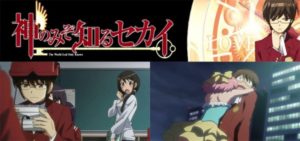
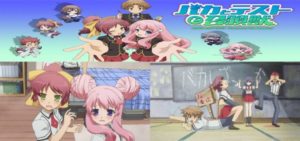
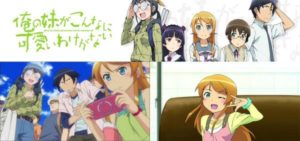


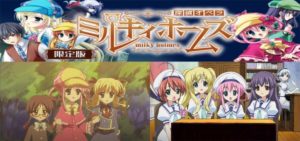

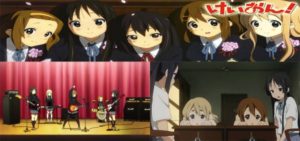
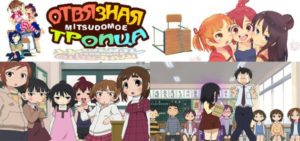
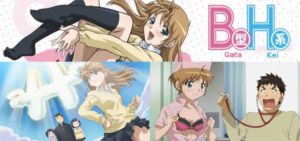


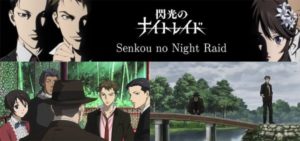
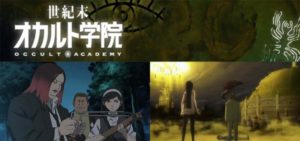

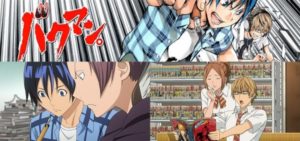
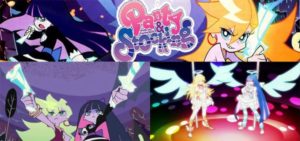
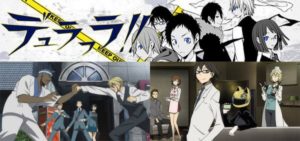
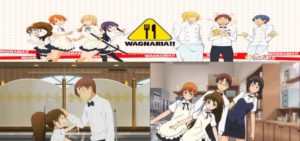
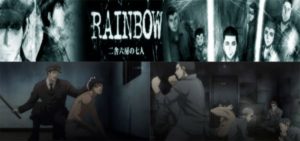
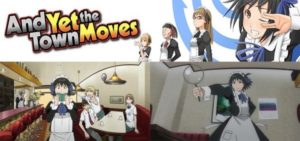
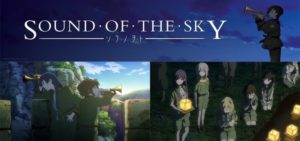
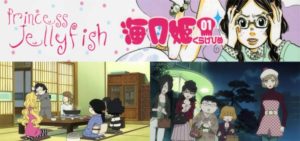
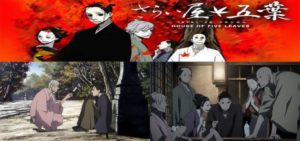


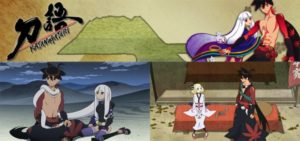
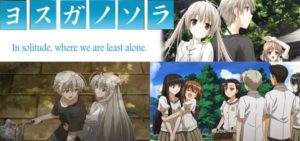
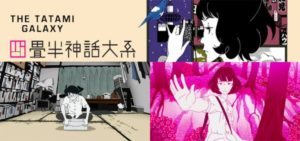

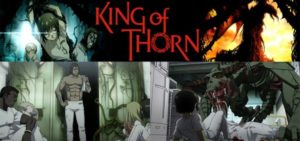
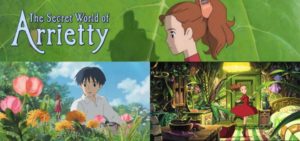

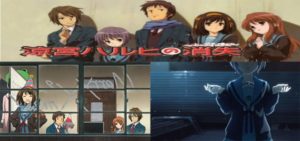
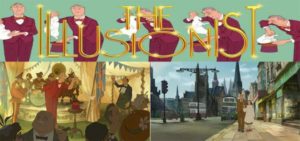
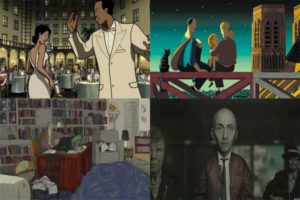
Wow. This seems like an ambitious project. Good luck on the rest! Honestly, the only show I watched during that time was Sora no Woto, and my opinion of it has soured a lot, namely because of the final two episodes. Oooh, I can’t wait to see your 2011 list!
Honestly, for me, 2010 was the year I began watching anime, old and new, on a consistent basis during summers and especially after school.
Well, for me it was probably 2009 that I started watching anime, but very, very casually. Have always been more of a movies-follower than anime-watcher, up until much later years that I started to follow it seasonally.
Agree that Sora no Woto finale is weak. But the rest just pleases me to no end. Also the epilogue OVA is pretty solid.
You got me. For a moment, I thought Tatami Galaxy wasnt on the list, and it got beat. I was upset. Missed it when checking the draft you showed us.
Glad someone else loves it though. Its one of my favorite anime ever made, but I also ran into it while I was in University myself, so it sort of struck a cord there.
Haha, I love to troll our readers sometimes. But it was rather obvious since there’s no chance that The Tatami Galaxy isn’t on this list, especially it’s the title that will pop up at your head first when you think of 2010 in anime.
Didn’t Fullmetal Alchemist: Brotherhood finish its run in 2010? Or didn’t you include it for a reason?
FA:B was aired in 2009 so I will include it in 2009 summary. I believe it’s better that I focus on a long-running series in one summary rather than spread out into many years. It always bugs me how the same title keep making year-end list for many consecutive years.
Thank you for this.
2010 was a lean year for me. I was burned out of anime and only watched two shows from those you covered. Night Raid (which a thought a good try) and Occult Academy which I really enjoyed.
I love this – good luck with the the rest of the project!
I’ve watched quite a few of these when they aired and even though it’s been 7 years since, some of them still hold up extremely well. Eg Katanagatari, Tatami Galaxy, Saraiya Goyou and the Haruhi movie. Will have to check out the rest of the top 10
No mention of Heartchatch Precure?
Granted that was before you joined the site, but this very blog was what introduced me to the series, and that ended up becoming one of my favorites of 2010 (the others being Shiki and Tatami Galaxy)
At one time I considered picking it, but mainly due to its long running (49 episodes, woah boy!! I’d go insane), and partly due to it being a sequel (standalone sequel, but still…), I let it pass this time. I’m willing to check it our in the future though.
I know Psgels really loved Heartcatch Precure when it aired, and I eventually watched it thanks to his praising it up the wazoo. Maybe give it a shot if you feel like it.
Unfortunately, due to utterly awful experiences I endured in the Precure fandom (namely the Tumblr section of it), I can’t even bring myself to look at Precure anymore.
Long running series never receive any love on blogs and such. Precure is an example of that. Fortunately, there are dedicated fans that make up for that.
Finally got around to reading this. I almost was ready to fire you upon seeing Yosuga no Sora at number 1 but thankfully you were joking.
Anyway don’t be mean to The World God Only Knows, Mangalobe really screwed up the adaption on that one. The manga is actually a pretty fun read and the focus was more on the comedy than romance. Comedy which Mangalobe managed screw up with adapting it. Plus needlessly extending girls arcs with filler.
Man I actually remember checking out the Illustionist years ago. Wasn’t my thing and i completely forgot about it till now.
I am glad the author of Baka no test went on to create Grand Blue because honestly Grand Blue is really damn funny. Think he just needed to move away from the school setting to really nail his comedy.
Disappearence is the high point for Haruhi as while the other unadapted arcs are not bad, none quite reach the highs of that arc. Still I would love a second season. In fact I would love for the author of Haruhi to get off his lazy ass and write another volume…wait…Surprise was the last volume? That was supposed to be the ending?! I didn’t even realise that! Ugh…then that ending is so unsatisfying.
Edit: Oh it was confirmed to not be his last Haruhi Novel. Well author it’s been six years. Where the hell is the sequel?
Scary how my job’s secureness is totally dependent on an incest anime. Thank God I had cold feet and placed it at #26 at last minites.
He author of Haruhi said that he still intends to write more (after we didn’t get to know the slider in Haruhi’s wish) vut yep, ha’s lazy to write more, KyoAni’s pretty much done with the franchise. so my hope for the new swason is nothing more than a wishful thinking.
Remember that I own you. The second I see you praising that incest crap and I kick you out on the street. You will never receive “Exposure” on this site again. I AM YOUR GOD…so bring the human sacrifices.
A new season of Haruhi isn’t impossible. In fact considering the new season of Kino, Saint Seiya reboot, LOTGH reboot, new Cardcaptor Sakura season, new Basilisk season and the new season of Full Metal Panic it actually looks quite possible for a new Haruhi season. Especially if that author manages to release a new volume, they would likely make one to drum up sales. But yeah, if there is one it is almost certain that KyoAni will not be adapting it.
I heard whispers that the dissociation of Haruhi suzumiya was pretty good story arc and it would make for a great film adaptation; is there anyway you could corroborate this?
You’re asking the right person! I’ve read the manga version (and plan to read the LNs) up to their latest so I know that there’s still plenty of stuffs left.
Ihad even gone so far of sorting all these small chapters in a non-linear way for the third season. Maybe one of those days I’ll post it here for your own amusement.
Their last arc, with consist of Dissociation & Surprise would make a very good movie adaptation. There is a counterpart of Haruhi who was Kyon’s first crush (she’s great) and the whole bunch who is supposed to be the counterpart of the other 3 members of the club. I remembered reading it, at once time I literally had my hand over my mouth in awe because it was so goddamn awesome.
So yeah, if there’s some studio who willing to adapt the rest, that would be damn perfect. Haruhi simply cannot end like this, with Endless 8 left the sour taste in the mouth of audience.
Great read. Keep it up, but do take your time.
Two small observations I gathered from the list:
-Pretty amusing that the first and the last shows come from the same studio, Madhouse (kind of tell you the direction the studio took since then. Hit and miss). Furthermore, the bad shows and the best one received the same suggestion: shut down your brain and enjoy the ride”. I guess there’s not much difference between the genius and the fool after all.
-6/10 from the last third received sequels, whereas Working!! was the only title from the top 10 that had subsequent seasons.
Regarding long-running shows, when it comes to this project, I’m extremely cautious about the length of the shows. By that I don’t mean I won’t give them a chance, but they’re better worth the time I spend. I’m willing to watch 100 plus episodes of Hunter x Hunter or Space Brothers for example, but I can’t say the same for titles like Beelzebub or Fairy Tail.
Thanks for this! It’s really nice to read this for the nostalgia of reading about anime I liked (Shiki, Haruhi, Colorful) and being reminded of stuff I have on my to watch list (Giant Killing, House of Five Leaves, Bakuman, Rainbow), and series which I might put on my to watch list after reading this article. (Princess Jellyfish) Keep it up!
Thanks for reading this, guys. You won’t be disappointed with Giant Killing, House of Five Leaves and Princess Jellyfish. I personally have some personal issues with Bakuman but I will finish the rest of it. For Rainbow especially, I don’t want to spoil the fun so much but the heavy-handedness really got into me, but otherwise it was a really solid watch
I loved this article! Especially your views on Bakuman (which I fully agree with) as well as your fav moe character (I just enjoyed Working!! in general). I love the fact that you added movies from other countries because The Illusionist and A Cat in Paris were fun to watch and its nice to know that animation can be enjoyed from all over, not just Japan. Please make this a regular article!
Thank you, thank you, BlackCat. My pleasure that you enjoyed reading the summary. Granted, review on Bakuman and the Miscellaneous Awards are where I went the most personal, serve as a bit of a break from critique other shows/ movies “objectively” so to speak, haha.
I’m planning to make this a regular feature, eyeing for beginning of next year for 2011 summary. This time though, I’ll update as I go along so if you guys wanna join catching up those shows, you’re more than welcome. It’s more fun that way than keeping you guys in the dark for one massive summary that might take forever like this.
Yes, I’m doing a World Animation section (you can check more at “World Animation” tag) for this blog as well, so it’s only natural I would include them here as well. These world indie animation really deserve more more more attention they currently have.